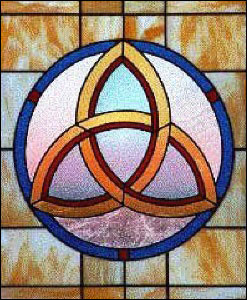This is one in a series of articles on the Christian doctrine of the Trinity. To see MRM’s website page on the Trinity to see other resources, please click here.
The information for this article is taken from Charts of Christian Theology and Doctrine by H. Wayne House (Zondervan, 1992)
There are four major false teachings about the Trinity that are still taught today. In short form, they can be summarized as:
- Dynamic Monarchianism: Originated by Theodotus, adherents are Paul of Samosata, Artemon, Socinius, and modern Unitarians.
In a nutshell: Denies the deity of Jesus and of the Holy Spirit while elevating reason above the Bible. It views the Father as the originator of the universe who is eternal, self-existent and without beginning or end. However, Jesus is not God but rather lived a virtuous (but finite) life as a man. The Holy Spirit is an impersonal attribute of the Godhead. There are too many biblical passages that declare the unity of the three persons of God while declaring their individuality.
2. Modalistic Monarchianism: Originated by Praxeas, adherents are Noaetus, Sabellius, Swedenborg, Schleiemacher, and United Pentecostals (Jesus only).
In a nutshell: According to modalism, the three names for God are the three “modes” by which God reveals himself. This view holds that the Father is fully God and is fully eternal as the primal mode of manifestation of the only unique and unitary God. Jesus is fully deity only in the sense that he is another mode of God the Father. And in the same way, the Holy Spirit is the manifestation of the one God. Modalistists like to use the illustration of a person acting in three different roles in the same play. This view depersonalizes the Godhead. With the accounts of the baptism and the prayer of Jesus at Gethsemane, how does one explain the three modes (Father’s voice/Son in the water/Spirit descending down from heaven) at one simultaneous moment? Or to whom was Jesus praying (himself?)? While modalists like to think the Trinity is contradictory, this view is even more confusing and contradictory.
3. Subordinationism: Originated by Arius, adherents are modern Jehovah’s Witnesses.
In a nutshell: Adherents believe that Jesus and the Spirit are distinct entities who do not share the divine essence of God. They also teach that “threeness in oneness” is self-contradictory and violates the biblical principles of a monotheistic God. It holds that God the Father is unbegotten and is without beginning or ending. However, Jesus is a created being and is not eternal. Though he is to be venerated, he is not of the divine essence. And the Holy Spirit is nonpersonal and noneternal, an expression of God but deity is not ascribed to him. Yet what about all of the verses that clearly point to the nature of deity as given to both Jesus and the Holy Spirit?
4. Tritheism: Originated by critics of early Christians, including Roscellinus, a Catholic monk of Compiègne, France; adherents are modern Mormons.
In a nutshell: The Father, Son, and Holy Spirit are three separate gods. Many have improperly considered Christians over the years as tritheists, though this teaching would do away with the important doctrine of monotheism. While Mormonism claims that each of the three persons is a god, the religion also teaches that there are potentially millions of other gods who preceded God the Father, as well as billions of other potential gods who have were human at one time. Some may suggest that many gods exist but they worship only one god (Heavenly Father). However, monotheism is not just the worship of one God but the belief in the existence of only one God. Hence, Mormonism should not be considered monotheistic but (take your pick) tritheistic, polytheistic (the belief in many gods), or, at best, henotheistic (the belief in many gods while worshipping only one). None should be considered orthodox Trinitarianism, which is monotheistic.
In contrast to these, consider biblical Trinitarianism:
Orthodox Trinitarianism: Defended by Athanasius and other important Christian leaders throughout the centuries, including Basil, Gregory of Nyssa, Gregory of Nazianzus, Augustine, Thomas Aquinas, Martin Luther, and John Calvin.
In a nutshell: This view sets forth the idea that the Father, Son, and Holy Spirit are co-equal and co-eternal in the Godhead with regard to both the divine essence and function. No analogy can completely express this position adequately. It is an incomprehensible doctrine. Though its principles can be understood to a point, it goes beyond human understanding. This is the historic view of the Christian church.

